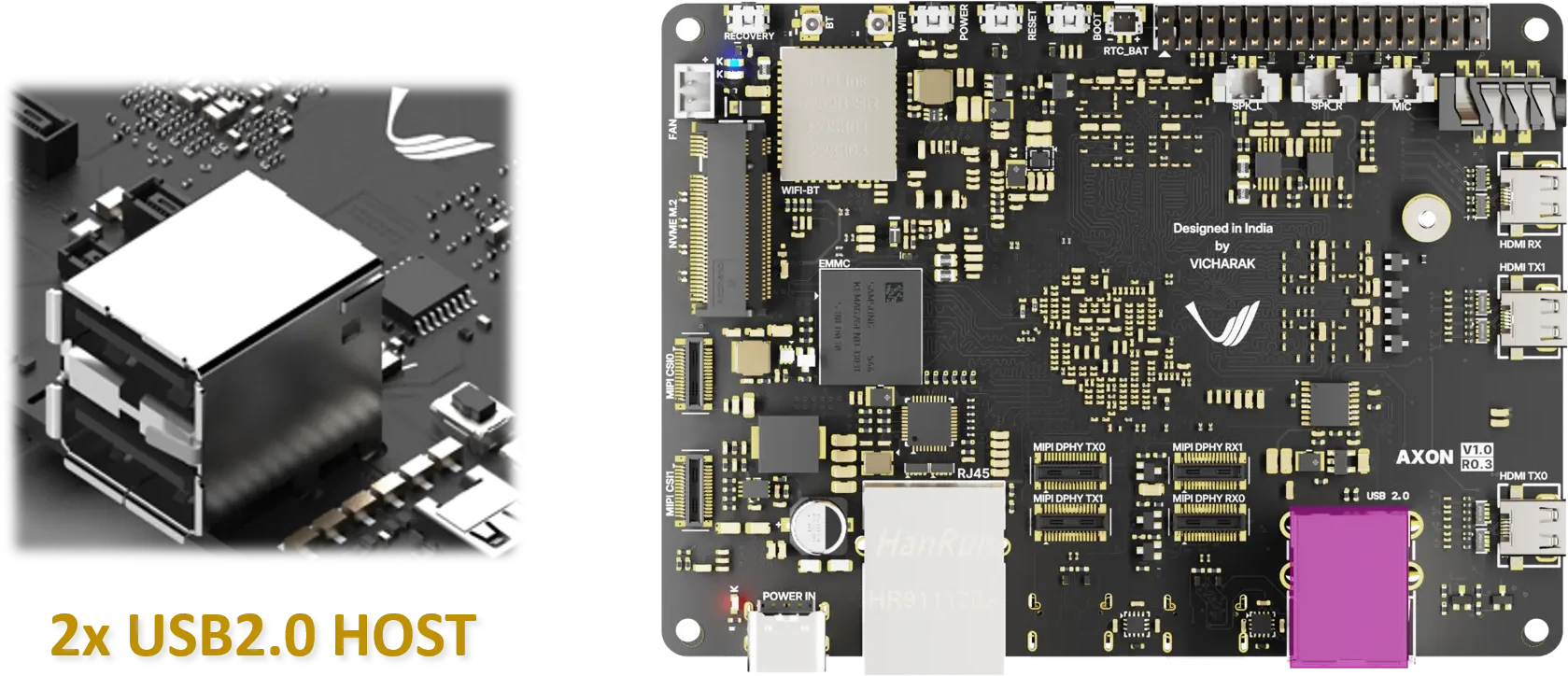USB 2.0
Axon has two USB 2.0 port ( 480 Mbps ). This guide explains how to use and inspect USB 2.0 interfaces on a Linux system.

Basic Utilities and Commands
List Connected USB Devices
Use lsusb to display information about USB buses and the devices connected to them.
vicharak@vicharak:~$ lsusb -t
/: Bus 003.Port 001: Dev 001, Class=root_hub, Driver=ehci-platform/1p, 480M
/: Bus 004.Port 001: Dev 001, Class=root_hub, Driver=ohci-platform/1p, 12M
/: Bus 005.Port 001: Dev 001, Class=root_hub, Driver=ohci-platform/1p, 12M
/: Bus 006.Port 001: Dev 001, Class=root_hub, Driver=ehci-platform/1p, 480M
|__ Port 001: Dev 005, If 0, Class=Mass Storage, Driver=usb-storage, 480M
What it shows:
USB Bus number (Bus 003, 004, 005 and 006)
Device number (Device 001)
Vendor ID and Product ID
Manufacturer and device name
To get verbose information:
lsusb -v
To filter by a specific device ID:
lsusb -d <vendor>:<product>
USB Device Speed and Topology
Use usb-devices to print detailed information:
usb-devices
Or read from /sys directly:
cat /sys/bus/usb/devices/usb*/speed
Mount USB Storage Devices
Check kernel log after device is plugged in:
dmesg | grep -i usb
Find your device (e.g., /dev/sda1) and mount it:
sudo fdisk -l
sudo mount /dev/sda1 /mnt
To unmount:
sudo umount /mnt
Live USB Debugging
Use dmesg to view logs:
dmesg | grep -i usb
dmesg -w # watch live
USB Command Reference
This section lists common Linux commands used to interact with USB devices.
Command |
Description |
|---|---|
|
List USB devices |
|
Detailed USB device info |
|
Kernel logs and hotplug info |
|
Mount USB storage device |
Note
- Speed values:
1.5 Mbps - USB 1.1 (Low Speed)
12 Mbps - USB 1.1 (Full Speed)
480 Mbps - USB 2.0 (High Speed)
5000 Mbps - USB 3.0 / USB 3.1 Gen1 (SuperSpeed)